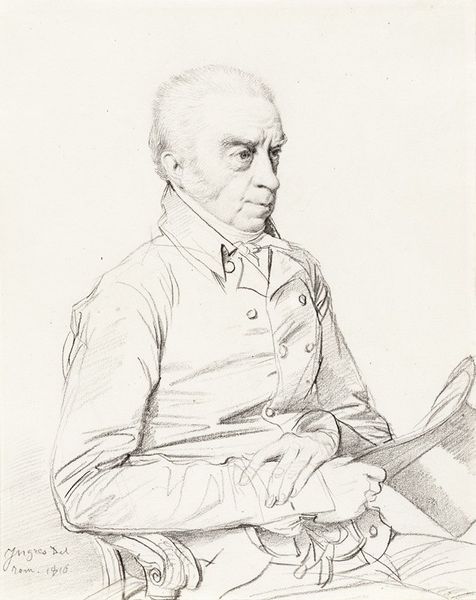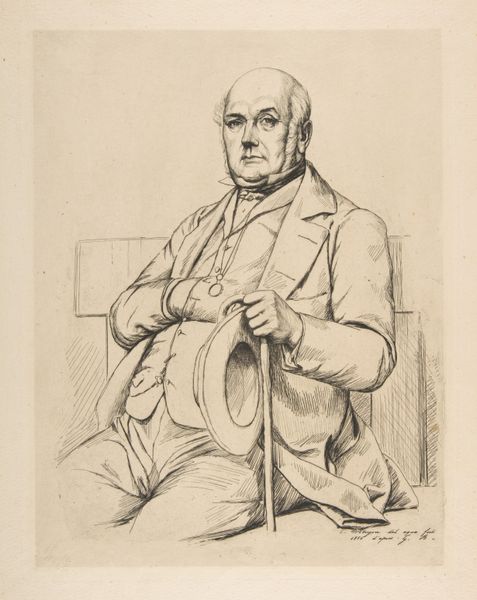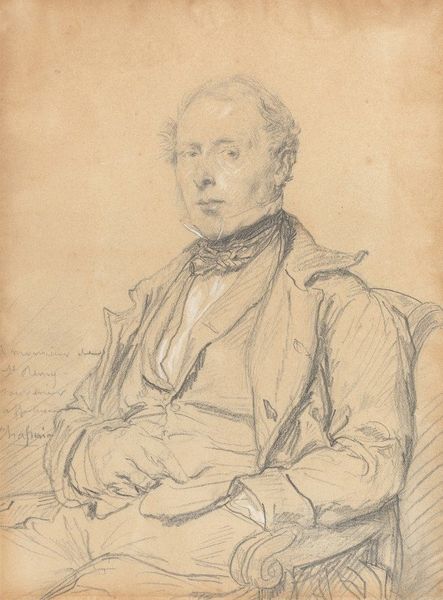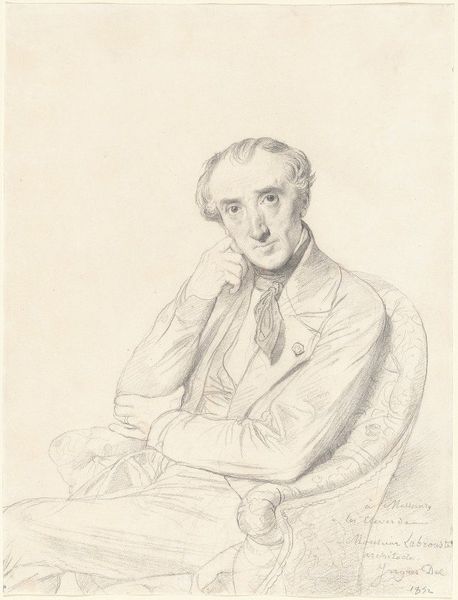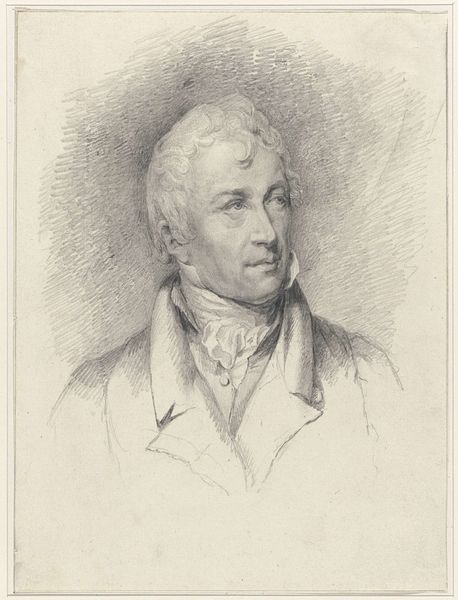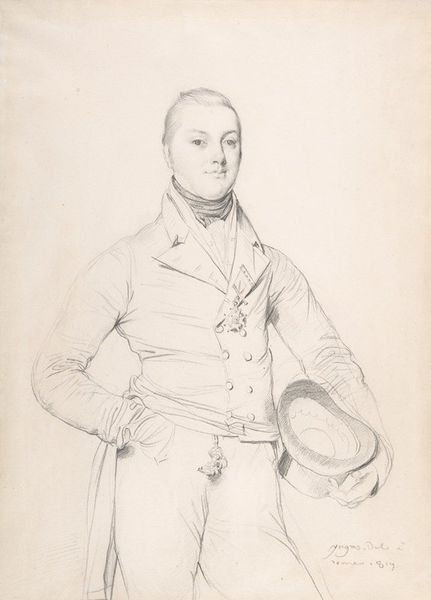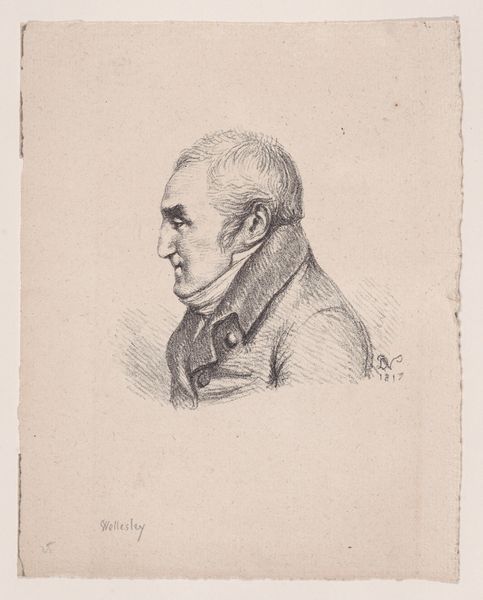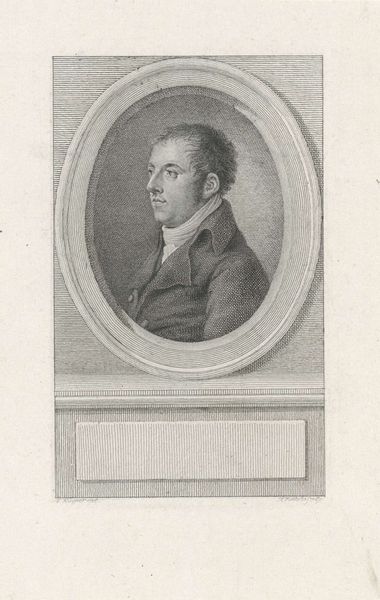
drawing, pencil
#
portrait
#
drawing
#
neoclacissism
#
charcoal drawing
#
form
#
pencil drawing
#
pencil
#
line
#
academic-art
#
realism
Copyright: Public domain
Editor: So here we have Ingres' portrait, "The Reverend Joseph Church," done in pencil. I'm immediately drawn to the starkness of the lines; it feels very… deliberate. What's your take on it? Curator: It's fascinating how Ingres, traditionally associated with high art, used pencil – a readily available, almost democratic material – to depict the Reverend. This seemingly simple choice challenges the hierarchies between fine art and craft. Consider the labor involved in creating such a detailed drawing, the physical act of applying pencil to paper. How does this process speak to the Reverend's social standing, his role in the community, and perhaps the means by which his image was circulated? Editor: That's interesting. I hadn't considered the accessibility of pencil in relation to the subject's social role. Was there a particular significance to using graphite for portraits at this time? Curator: Precisely. Pencil allowed for a faster, more reproducible image than painting. This suggests a burgeoning market for portraiture that caters to a wider audience, perhaps even reflecting the democratization of representation itself. And note how Ingres uses line. The production of this form, through laborious layering and expert hand-eye coordination, suggests an elevated degree of artistic mastery, something that at this point, in this style, was commodifiable and valuable. Do you see how the very materiality informs the reading? Editor: Yes, absolutely. I was so focused on the style that I overlooked the medium's implications. It really reframes the artwork. Curator: Indeed. Looking at the Reverend Church, we are not just viewing a depiction but also confronting the social, economic, and material conditions that shaped its creation and dissemination. Considering these aspects is crucial for grasping a more holistic understanding of the piece. Editor: Thanks, I'll definitely think more about the materials and production process. It has shifted how I understand the art.
Comments
No comments
Be the first to comment and join the conversation on the ultimate creative platform.
